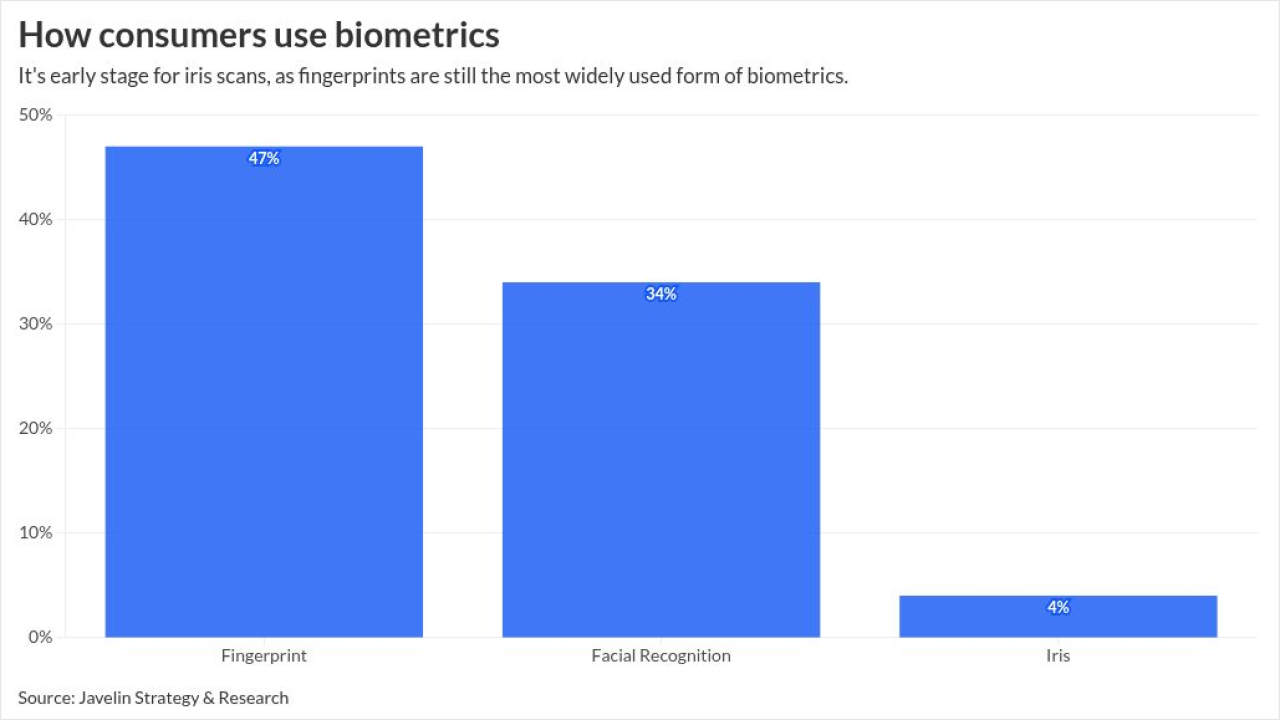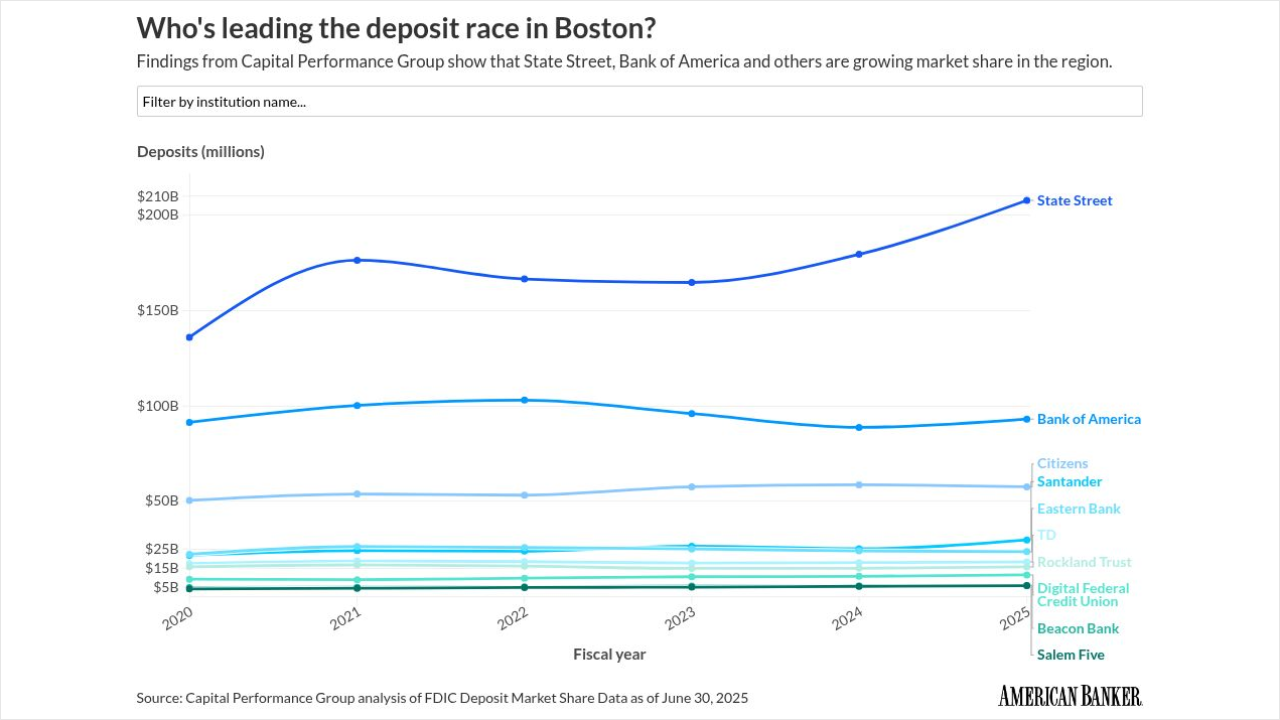Key insight: The Federal Deposit Insurance Corp. will let private equity and other nonbanks bid on failed banks to make resolutions faster and more competitive.
Supporting data: The agency is overhauling its least cost test model, which estimates the impact of a sale to the Deposit Insurance Fund. What used to take staff days, Hill says, will now take only hours.
Forward look: FDIC is also leading efforts on cross-border bail-ins and preparing rules for stablecoin banks.
Federal Deposit Insurance Corp. acting Chair Travis Hill Wednesday said the agency is working on a series of bank resolution reforms that include allowing private equity firms and other nonbanks to bid on failed banks, which he said will make U.S. bank resolutions faster, less costly and more competitive.
Speaking remotely before a conference in Brussels commemorating the 10th anniversary of the European Central Bank Single Resolution Mechanism board, Hill said the FDIC is working to establish a prequalification system for nonbank bidders, which he estimated would be unveiled in January. Hill said the proposal would allow private equity firms to participate in purchases of banks or parts of their portfolios. The agency will begin a pilot process in January and later revise the program after receiving subsequent feedback. Expanding the pool of firms that can bid, Hill says, can help ensure the agency avoids a prolonged bidding process.
"The downside risk of not finding an acquirer, or of the best bid coming at a substantial cost to the DIF, may outweigh the downside risk of potential future problems at certain potential bidders," Hill said. "Of course, maintaining criteria that exclude institutions with immediate vulnerabilities remains critical, but the smaller the number of potential acquirers, the less luxury there is to be selective in setting eligibility criteria."
Hill reflected on the costly resolutions of Silicon Valley Bank and Signature Bank in 2023, which utilized a "bridge-bank" strategy. Hill
"Given the plethora of challenges and costs associated with running a bridge bank, in my view, the primary goal for resolution planning for large regional banks should be to maximize the likelihood of the optimal resolution outcome, which is generally a weekend sale," said Hill. "It is also true that a weekend sale might not be available, and so our secondary objective should be to be prepared to operate an institution for a short period of time post-failure, if needed, while at the same time actively pursuing a sale."
Internally, Hill said the FDIC is engaging with institutions interested in purchasing banks to solicit feedback about overhauling its bidding process to make it faster and more transparent.
"As we update our marketing process, we expect to find ways to be more proactive in expanding engagement — to educate bidders about our process, gauge acquisitive interest, and seek ongoing input on areas where we can improve," Hill said.
He says prospective bidders have repeatedly related the importance of having access to well-organized virtual data rooms and more ready information on a failed bank's deposits, loans and operations. He says additional risk management reports and liquidity data could be helpful "off-the-shelf reporting" that can give bidders a more clear financial picture of the bank up for auction.
Given the short window with which bank sales often occur, Hill says prospective bidders have stressed the need for advanced preparation and clear communication during a failure. The FDIC is therefore upgrading its internal operations to better manage large or rapid bank failures, including new customer service and asset management systems and a new Large Bank Ready Reserve program to cross-train staff so resolution divisions can collaborate across departments to speed up the resolution process. He added that the agency has also overhauled its least-cost test model, replacing an outdated code and manual inputs he says sometimes took employees days to calculate with a faster, automated system that can process bids in just hours.
On financing, Hill said the FDIC is working with the Federal Financing Bank — a Treasury office tasked with managing agency debt and financing — to securitize assets more quickly, noting that the 2023 bank failures forced the agency to borrow $273 billion from the Federal Reserve at a costly penalty rate.
Another issue Hill says the FDIC is trying to resolve going forward is the legal complications of trying to "bail-in" certain bank bonds held by investors. The 2023 collapse of Credit Suisse exposed legal obstacles to imposing losses on U.S. bondholders in a cross-border bank failure, prompting the FDIC to lead efforts to ensure bail-ins can be executed globally without violating U.S. securities laws. A bail-in is when a failing bank's creditors or bondholders absorb losses by having part of their debt written off or converted into equity, effectively using investor losses in place of taxpayer bailouts. The FDIC is now chairing a new international task force under the Financial Stability Board to clarify how bail-ins can be done across borders without breaking U.S. law.
In a separate appearance Wednesday morning at the DC Fintech Week conference in Washington, D.C., Hill said the agency is drafting prudential standards for stablecoin-issuing banks under FDIC supervision and is finalizing memorandums of understanding with the Federal Reserve and Treasury to launch the new Stablecoin Certification Review Committee.
"From a rulemaking perspective, we need to issue prudential standards — capital, liquidity, reserve diversification, interest rate risk management, there's a list of credential standards that the statute requires us to issue and propagate," Hill said, adding the agency is also propping up a stablecoin application and licensing regime for banks.
"The application and licensing piece for us is going to be pretty straightforward, given that the potential applicants would all be institutions that we already supervise," Hill continued. "The pieces that are probably going to be more interesting with policy issues [are] looking at nonfinancial companies that potentially want to become issuers, looking at state-based regimes."







